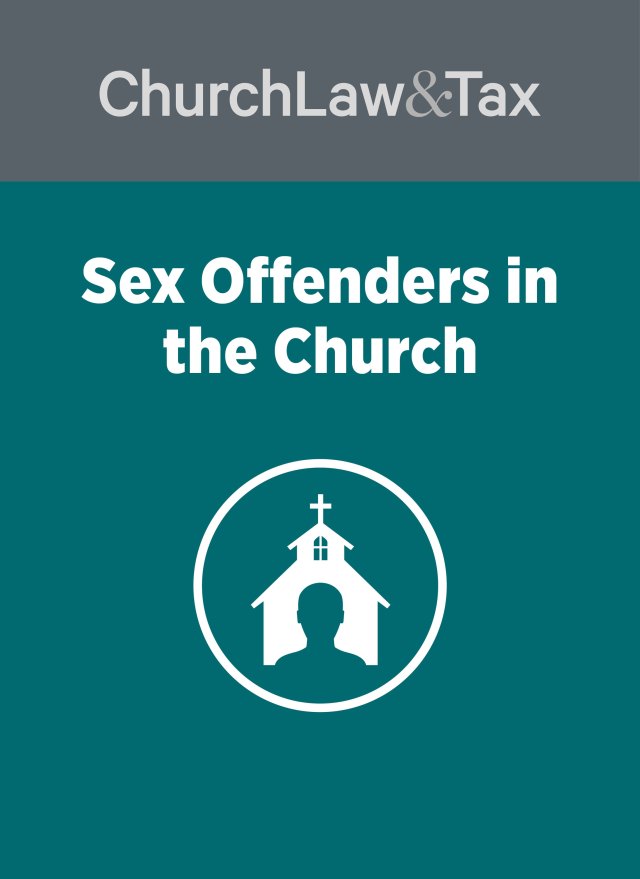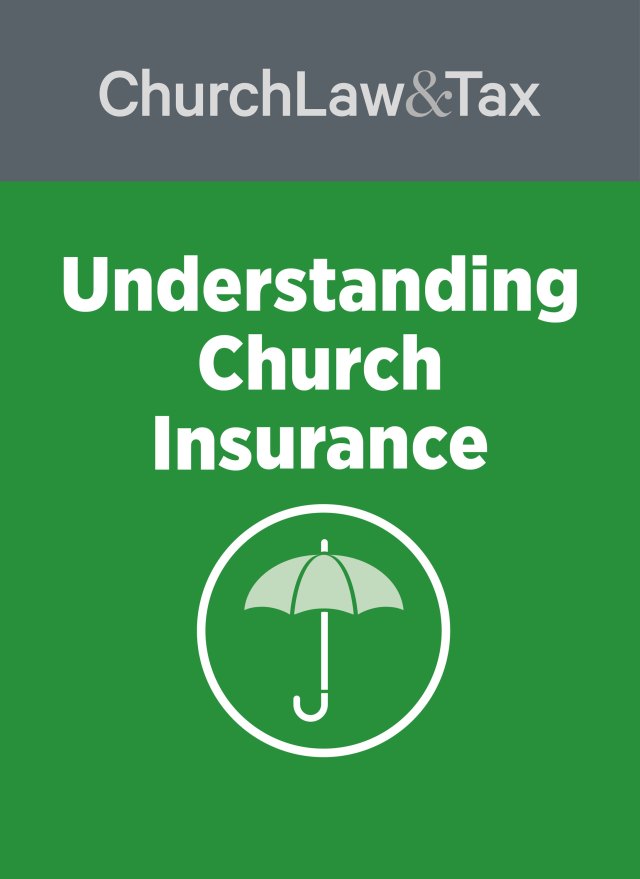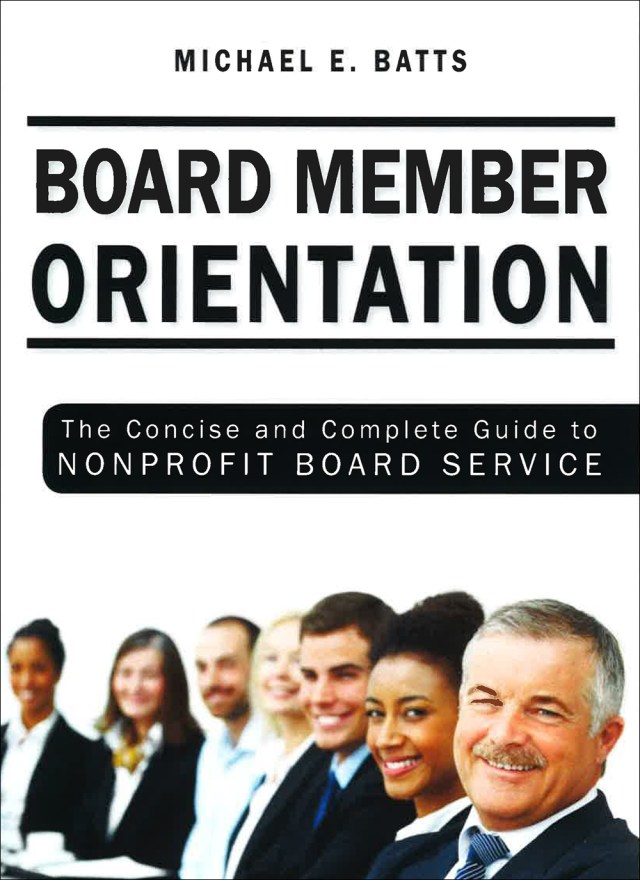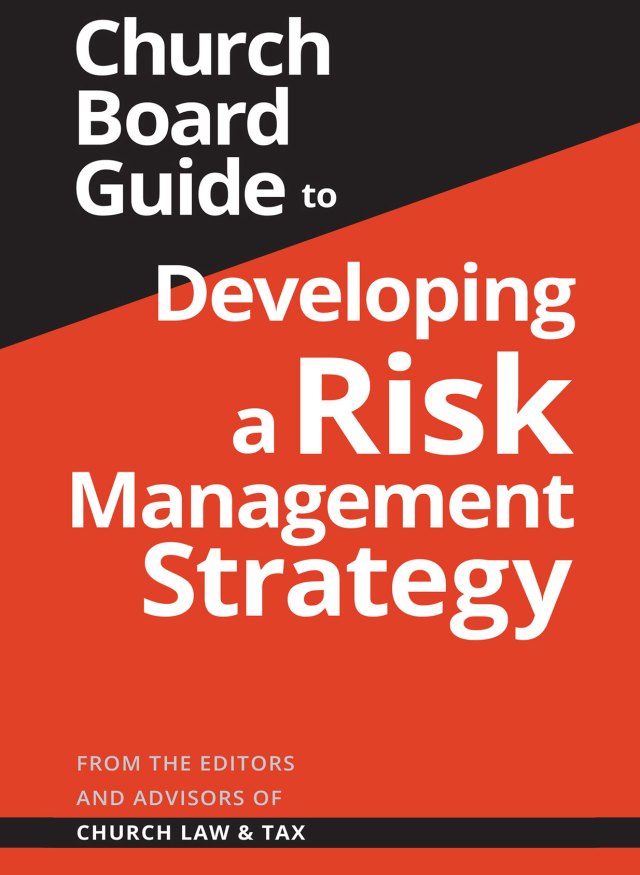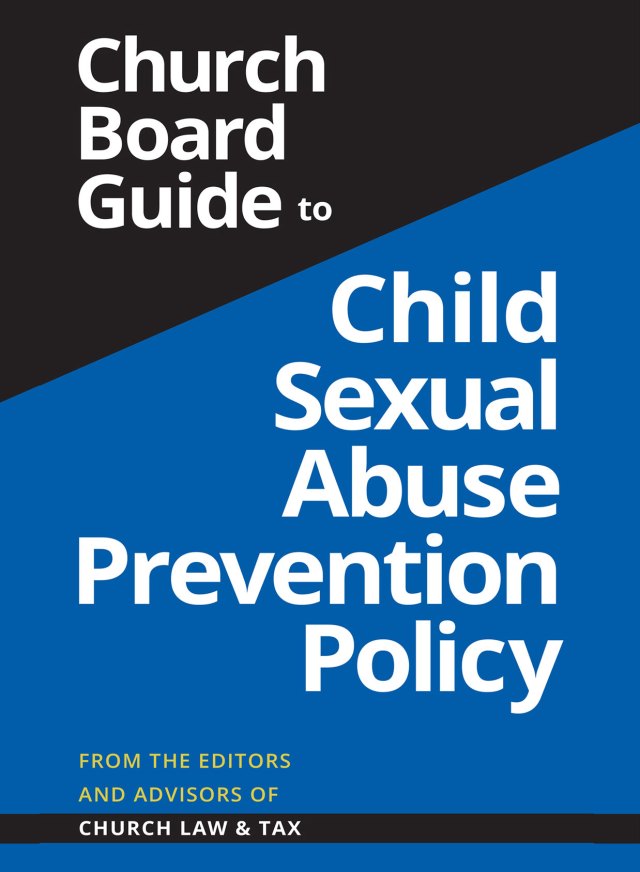Church leaders often struggle with the question of whether a current or previously registered sex offender continues to pose a risk of harm to others. Consider the following examples.
• Example. D is an adult male who has begun attending a church. A member informs the pastor that D is a registered sex offender. Church leaders are unsure whether to exclude D from church services and activities, or to allow him to attend.
• Example. A denomination ordains ministers. It receives an application for ordination from a person who previously was on a sex offender registry. Denominational officials are unsure how to evaluate the applicant’s fitness for ministry.
• Example. A denomination ordains ministers. Ten years ago, it ordained Pastor B. This year, it received a complaint from an adult woman that she was sexually molested by Pastor B when she was a minor, and before Pastor B was ordained. Denominational officials are unsure how to evaluate this information. If an investigation confirms the charge, should they revoke Pastor B’s ordination?
A recent ruling by a federal district court in Massachusetts provides church and denominational leaders with information that may be helpful in formulating an appropriate response in such cases. The case—U.S. v. Hunt, 643 F.Supp.2d 161 (D. Mass. 2009)—involved a sex offender (the “defendant”) who had molested dozens of minors over several years, and who was about to be released from prison after serving his sentence.
The federal government asked the court to prohibit the defendant’s release on the basis of a provision in the Adam Walsh Child Protection and Safety Act that authorizes the confinement of “sexual dangerous persons.” The Act defines a sexually dangerous person as “a person who has engaged or attempted to engage in sexually violent conduct or child molestation and who is sexually dangerous to others.” An individual is “sexually dangerous to others” under the Act if he “suffers from a serious mental illness, abnormality, or disorder as a result of which he would have serious difficulty in refraining from sexually violent conduct or child molestation if released.”
In order to keep the defendant incarcerated following the end of his sentence, the government must show that his disorder causes him “serious difficulty in refraining from sexually violent conduct or child molestation.”
During a five-day hearing, the court heard testimony from four expert witnesses who had evaluated the defendant (one psychiatrist and three psychologists) regarding the danger he posed to others if released from prison. The testimony of these expert witnesses may be helpful in evaluating the danger that current or previously registered sex offenders pose to others. Here are some of the experts’ findings:
(1) All four experts who evaluated the defendant agreed that his sexual offense history was consistent with a diagnosis of pedophilia.
(2) In reaching a diagnosis, each of the experts relied on the diagnostic criteria in the Diagnostic and Statistical Manual of Mental Disorders, Fourth Edition, Text Revision (“DSM-IV-TR”), which is generally relied upon in the fields of psychology and psychiatry. Under the DSM-IV-TR, the diagnostic criteria for pedophilia are:
A. Over a period of at least 6 months, recurrent, intense, sexually arousing fantasies, sexual urges, or behaviors involving sexual activity with a prepubescent child or children (generally age 13 or younger);
B. The person has acted on these sexual urges, or the sexual urges or fantasies cause marked distress or interpersonal difficulty;
C. The person is at least age 16 years and at least 5 years older than the child or children in Criterion A.
(3) According to the DSM-IV-TR, “the course of pedophilia is usually chronic, especially in those attracted to males.”
(4) One of the experts testified that “virtually every aspect of the defendant’s life” outside of prison was directed to molesting prepubescent boys.
(5) Two of the experts testified that sexual arousal to children is akin to “sexual orientation” and not subject to change. One testified, “I would diagnose him with pedophilia. His record certainly supports that. If I was asked more specifically, well, what about today, well, you know, many, if not most, pedophiles would have that label throughout their lives, there’s no doubt about that.”
(6) In order to keep the defendant incarcerated following the end of his sentence, the government must show that his disorder causes him “serious difficulty in refraining from sexually violent conduct or child molestation.” Three of the experts concluded that the defendant’s pedophilia would cause him serious difficulty refraining from further acts of child molestation. One expert opined that the defendant’s advanced age (65) precluded any finding that he would have serious difficulty refraining from child molestation.
(7) In assessing his dangerousness, the experts relied upon various tools to assess a sex offender’s recidivism risk. As one expert explained, “These instruments consider those risk factors that research says predict future sexual reoffense … weight each one of them statistically for what they contribute to future sexual reoffense [and] then … add those weights up to come up with an overall risk level and some general probabilities of sexual reoffense.” The court further explained:
The actuarial instruments account for a number of risk factors, the presence or absence of which determines the sex offender’s risk of reoffense. The weightiest risk factor, for example, is the number of prior sex offenses. On each of the actuarial instruments, the sex offender receives a weighted score for this item based on the number of prior sex offenses. For each of the remaining items, the offender may receive a score of one or zero based on the presence or absence of that risk factor. The number of points for each item is then added up to produce a score representing the offender’s risk of reoffense.
The score provided by the actuarial instruments serves two functions. First, the score represents the offender’s level of risk relative to other sex offenders. The higher the score, the greater the risk of reoffense. The different instruments use different scoring systems and take into account slightly different risk factors, but all of them have demonstrated moderate predictive accuracy as to relative risk.
Another function of the actuarial score is to provide an estimate of “absolute risk.” The score a sex offender receives on any given actuarial corresponds to a statistical rate of recidivism for offenders receiving the same score. This measure of absolute risk, though valuable, is not a perfect measure of a given sex offender’s probability of reoffense. First, the overall rate of sexual offending in the sample population, the “base rate,” may not reflect the rate of sexual offending in the population as a whole. Second, the actuarials consider only historical factors and do not account for “dynamic factors,” which could change a specific offender’s absolute risk over the course of his life. Third, the recidivism estimates provided by the actuarials systematically underestimate the actual rate of reoffense because the numbers are based on rearrests. Most sex offenses are never reported, so the statistical level of rearrest for a given actuarial score is generally lower than the true probability that a sex offender will reoffend. [The defendant’s] case is illustrative, as he has reported many more offenses than his criminal record alone would indicate.
(8) The four actuarial instruments used in this case were (i) the Rapid Risk Assessment for Sexual Offense Recidivism (“RRASOR”); (ii) the Static-99; (iii) the Static-2002; and (iv) the Minnesota Sex Offender Screening Tool-Revised (“MnSOST-R”). Each of the experts agreed that these actuarial instruments are generally accepted within the community of experts conducting sex offender risk assessments. On each of the four instruments used by these experts, the defendant scored in the “high risk” range. These four actuarial instruments that were used to assess a sex offender’s risk of recidivism are explained below.
a. RRASOR
The Rapid Risk Assessment for Sexual Offense Recidivism (“RRASOR”) is an actuarial instrument developed in 1997 by Dr. Carl Hanson and is a relatively simple tool consisting of only four risk factors. The score is based on:
- the number of prior sex offenses
- age at time of release
- victims’ gender
- relationship to the victims
- The RRASOR score ranges from zero to six, with six representing the highest risk level.
- One of the experts scored the defendant as a five on the RRASOR, which signifies a high risk of reoffense. The estimated recidivism rates for an individual with a score of five on the RRASOR, without adjusting for dynamic factors such as advanced age, are 49.8 percent over a five-year period and 73.1 percent over a 10 year period. This expert testified that he only uses the RRASOR as a starting point and that risk assessment must also take into account dynamic risk factors. For example, he believed that the defendant’s advanced age rendered his score “meaningless today.”
- b. Static-99
- The Static-99 was developed by Dr. Hanson and Dr. David Thornton in 1999 and is the most widely used tool in sex offender risk assessment. The Static-99 consists of 10 items, which are statistically correlated to a risk of sexual “reoffending.” The score is based on the following risk factors:
- age at time of release
- relationship status
- nonsexual violence
- prior nonsexual violence
- number of prior sex offenses
- number of prior sentencing dates
- number of convictions for non-contact sex offenses
- unrelated victims
- related victims
- victims’ gender
- age
- prior sex offenses
- juvenile arrest for sex offense
- high rate of sex offenses
- non-contact sexual deviance convictions
- male sexual deviance victims
- two or more victims, at least one of whom related
- unrelated victims
- stranger victims
- prior arrests for non-sexual offenses
- breach of conditional release for non-sexual offense
- four years free of non-sexual offenses
- prior non-sexual violence
- number of sex offense convictions
- length of sexual offending history
- under any form of supervision when a sex offense was committed
- one or more sex offenses committed in a public place
- force or threat of force use in committing sex offense
- multiple sexual acts on same victim
- number of different age groups victimized
- 13-15 year old victim (offender at least five years older)
- victim was a stranger
- adolescent antisocial behavior
- pattern of drug or alcohol abuse
- employment history
- disciplined while incarcerated
- chemical dependency treatment while incarcerated
- sex offender treatment while incarcerated
- age of offender when released from prison or custody
Scores on the Static-99 range from zero to 12, with 12 representing the highest risk level.
Two of the experts scored the defendant at eleven, the highest possible score for an individual of his age. Such a score placed him in the high risk category. One of these experts testified that the average score on the Static-99 is “about a two,” and that a score of eleven is “rare.”
Another of the experts testified that he had never previously seen a score of eleven, and that in a sample of 6,400 sex offenders assessed in the most recent Static-99 study, no offender scored as high as eleven, and only twenty-two scored a ten. As a result, there is no risk estimate percentage associated with the defendant’s score. In the most recent Static-99 study, sex offenders scoring a ten recidivated at a rate of 51 percent over 5 years and 66 percent over 10 years.
According to the logistic regression estimates derived from this data, a score of ten indicates reoffense probability rates of 35 percent to 50 percent over a five-year period and 49.7 percent to 60 percent over a 10 year period.
c. Static-2002
The Static-2002 is a newer version of the Static-99. The instrument is generally accepted within the psychological community, but it has only recently come into use. The Static-2002 consists of 3 items, which are divided into categories by risk type to better identify the source of the risk. The 13 factors used in the Static-2002 analysis are as follows:
One of the big changes from the Static- 99 is that the Static-2002 better accounts for the age of the sex offender. Where the Static-99 only considers whether the offender is below the age of 25, the Static- 2002 divides offenders into 4 separate age groups: 18 to 24, 25 to 34, 35 to 49, and 50 or older. The youngest group represents the most likely to reoffend.
Scores on the Static-2002 range from 0 to 14, with 14 representing the greatest risk. One expert scored the defendant as a ten on the Static 2002, putting him in the “high risk” range. According to the norms associated with the Static-2002, a score of 10 reflects a probability of sexual rearrest of 25 percent to 38 percent in the first 5 years and 30.5 percent to 45.5 percent over 10 years.
d. MnSOST-R
The Minnesota Sex Offender Screening Tool, Revised (MnSOST-R) is another actuarial instrument designed to assess a sex offender’s risk of reoffense. The instrument consists of the following 16 items:
Unlike the other actuarial instruments, which consist solely of static or historical factors, the MnSOST-R also accounts for so-called dynamic factors, such as sex offender treatment and employment. In addition to including dynamic factors, the MnSOST-R accounts for some static factors that are not present in other instruments, such as whether the offender has
committed an offense in a public place.
Only one of the four experts used the MnSOST-R in evaluating the defendant, and he gave him a score of 14. A score of eight or above is in the high risk range. A score of 13 or above is in the range known as “refer” because such a score leads to automatic referral for evaluation under the Minnesota sexually violent predator law. An older study of sex offenders who were not subject to intensive community supervision indicated that individuals with a score of fourteen on the MnSOST-R reoffend at a rate of 72 percent over 6 years. A more recent sample of sex offenders subjected to intense community supervision revealed a recidivism rate of approximately 40 percent over 6 years for sex offenders with a MnSOST-R score of 14.
(9) The four experts differed as to the effect of the defendant’s age (65) on his risk of committing sexual offenses. Each of the four experts who evaluated the defendant agreed that recent research has demonstrated a significant decrease in recidivism rates for sexual offenders over age 60. Where the experts differed was the issue of how significant the effect of aging is.
A leader in research on the effects of age on sexual recidivism testified that the available data on child molester recidivism rates reveals an increase in recidivism from ages 18 to 25 followed by a linear decline in sexual recidivism over the remainder of the offender’s life. The court summarized this expert’s testimony as follows:
The decline in sex offender recidivism with age is consistent with findings in criminology indicating that criminal behavior generally declines with age. This expert further testified that the decline is also explained by findings of biology and behavioral psychology. Research in these fields indicates that a decrease in testosterone levels results in a concomitant reduction in sexual behavior. Studies have revealed that this effect holds true for sex offenders, finding that testosterone reductions of sex offenders yields significant drops in recidivism rates. This correlation between testosterone levels and sexual behavior is significant to age because, beginning in the teenage years and continuing throughout the remainder of a male’s life, testosterone levels naturally decline ….[This expert] acknowledged that, although most offenders experience a decline in absolute risk of reoffense with age, individual offenders have continued to offend into their sixties and seventies.
Although all of the experts in this case agreed that advanced age results in some decrease in risk of reoffense, the precise extent of this effect is not at all settled. At least one group of researchers denies that aging has any effect on risk of sexual reoffense, but none of the experts at trial credited the group’s findings. Another study found that the base rate of sexual reconviction for a sample of 1,300 offenders was 5.6 percent between the ages of 40 and 50, and then actually increased slightly after age 55 to a rate of 6.1 percent ….
[Three of the experts] cited a study finding no decline in recidivism rates between the ages of forty and sixty for sex offenders with three or more prior convictions for a sex offense. [One expert] referred to this group as “sexual specialists,” a class of high risk offenders that does not experience the linear decrease in risk that most offenders undergo, but instead maintains about a fifty percent rate of reoffense through age 59 ….
Another issue related to the effect of age on recidivism rates that remains unresolved in the literature is whether the most dangerous offenders are underrepresented in the recidivism studies. The most dangerous offenders are more likely to serve the longest sentences if convicted and are likely to grow old in prison. These most dangerous offenders may be underrepresented in the available data and could constitute a group of “offenders whose risk remains unacceptably high as long as they are physically capable.”
One of the experts testified that the defendant’s advanced age rendered his scores on the actuarial instruments “meaningless.” According to him, the overall recidivism rate of offenders over 60 is so low that “there is no earthly, scientific way to predict in the affirmative that someone is going to reoffend” at that age. However, this witness did calculate that the defendant’s RRASOR recidivism rate adjusted for age was 24.2 percent. He conceded that it was “possible” that the defendant will reoffend, but explained that he viewed his role as determining not what is possible but what is “probable” or likely beyond a reasonable doubt.
The other three expert witnesses all reduced the defendant’s risk to account for his advanced age, but all three determined that he would still have serious difficulty refraining from sexually reoffending if released. One testified that his advanced age was “prognostically favorable” but that his pedophilia “is so severe that, even after weighing his age in his favor, he remains sexually dangerous.”
A second expert witness recognized that risk of sexual reoffense generally declines with age, but he testified that there is no consensus method for adjusting risk down to account for age.
This can be vital information … to church and denominational leaders in deciding how to respond to known sex offenders … who want to become ministers, retain ministerial status, attend church services, or become involved in church programs and activities.
Another expert witness testified that the vast majority of sex offenders over age 60 are no longer sexually dangerous, but the persistence and severity of the defendant’s sex offending history together with his uncommonly high actuarial score make him an “outlier.” This expert concluded that the defendant’s “risk of future sexual reoffense is so high, that he’s such a sexual specialist and that he has suffered from [such] a severe pedophilia throughout his life and has had such poor volitional controls over it” that he meets the criteria for commitment under the Act in spite of his age.
(10) One expert testified that he rarely considers sexual offender treatment to be a significant protective factor and that it was not a protective factor for the defendant.
(11) Another potential protective factor is supervised release. One expert testified that supervised release and time in a halfway house could help the defendant manage his impulses, but not enough to alter his opinion that the defendant would have serious difficulty refraining from child molestation. This expert further testified that a three-year treatment program was not lengthy enough to reduce the defendant’s risk significantly, and that the conditions of supervised release generally are not a protective factor.
(12) The court concluded that the defendant was a “sexually dangerous person” since the government had proven by clear and convincing evidence that he has “engaged or attempted to engage in sexually violent conduct or child molestation” in the past, and “is sexually dangerous to others.” The sexual dangerousness determination in turn required two findings: (a) that the defendant “suffers from a serious mental illness, abnormality, or disorder”; and (b) that as a result he “would have serious difficulty in refraining from sexually violent conduct or child molestation if released.” All of these conditions were met, the court concluded.
Relevance to church leaders
This case is important because it demonstrates that tests exist to assess a sex offender’s likelihood of reoffending. This can be vital information, not just to state and federal authorities in deciding whether to extend the prison sentences of “sexually dangerous persons” under the Adam Walsh Child Protection and Safety Act, but also to church and denominational leaders in deciding how to respond to known sex offenders (whether registered or not) who want to become ministers, retain ministerial status, attend church services, or become involved in church programs and activities.
In many states, the tests described in this article (and other sex offender recidivism assessments) can be administered only by a psychologist or psychiatrist. The use of such a test should be considered by church and denominational leaders in evaluating a known sex offender’s fitness for ministry or church participation.
Church Law & Tax Report is published six times a year by Christianity Today International, 465 Gundersen Dr. Carol Stream, IL 60188. (800) 222-1840. © 2010 Christianity Today International. editor@churchlawandtax.com All rights reserved. This publication is designed to provide accurate and authoritative information in regard to the subject matter covered. It is sold with the understanding that the publisher is not engaged in rendering legal, accounting, or other professional service. If legal advice or other expert assistance is required, the services of a competent professional person should be sought. “From a Declaration of Principles jointly adopted by a Committee of the American Bar Association and a Committee of Publishers and Associations.” Annual subscription: $69. Subscription correspondence: Church Law & Tax Report, PO Box 37012, Boone, IA 50037-0012.
